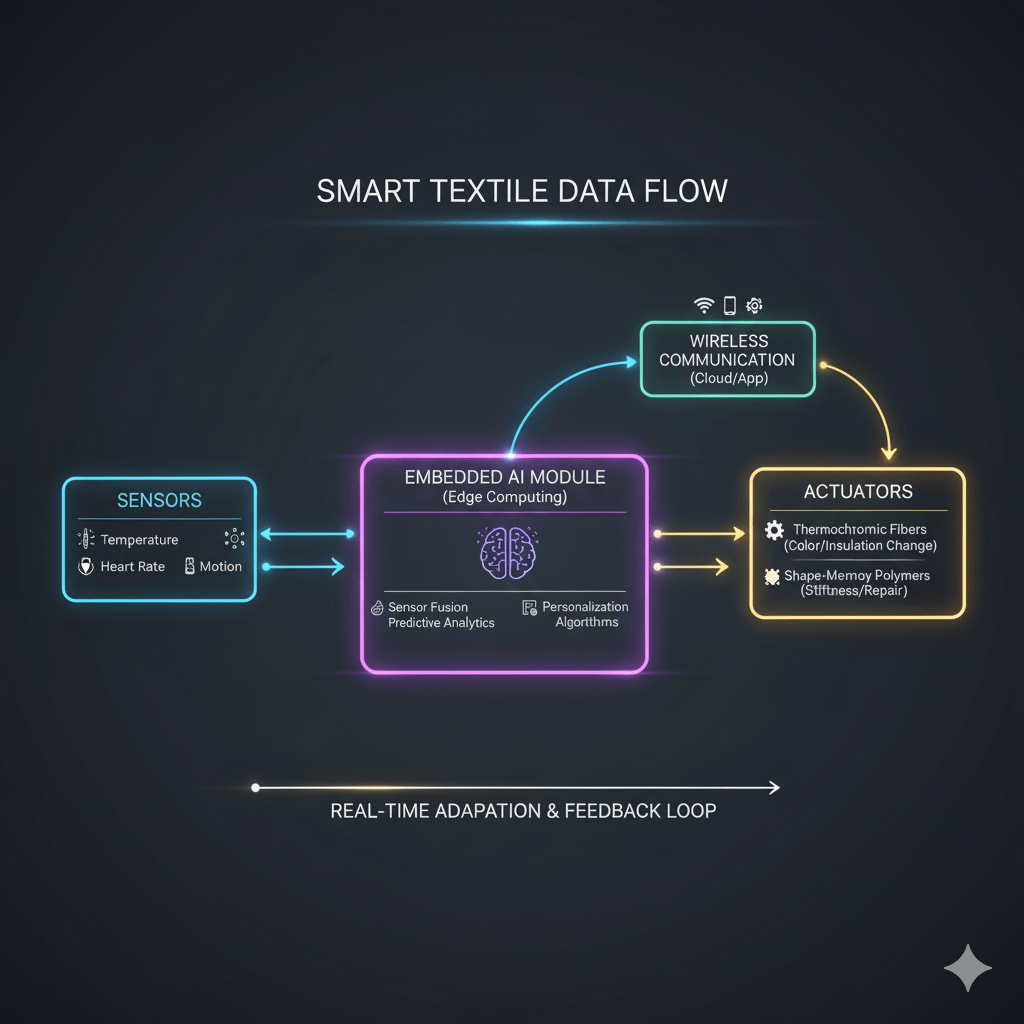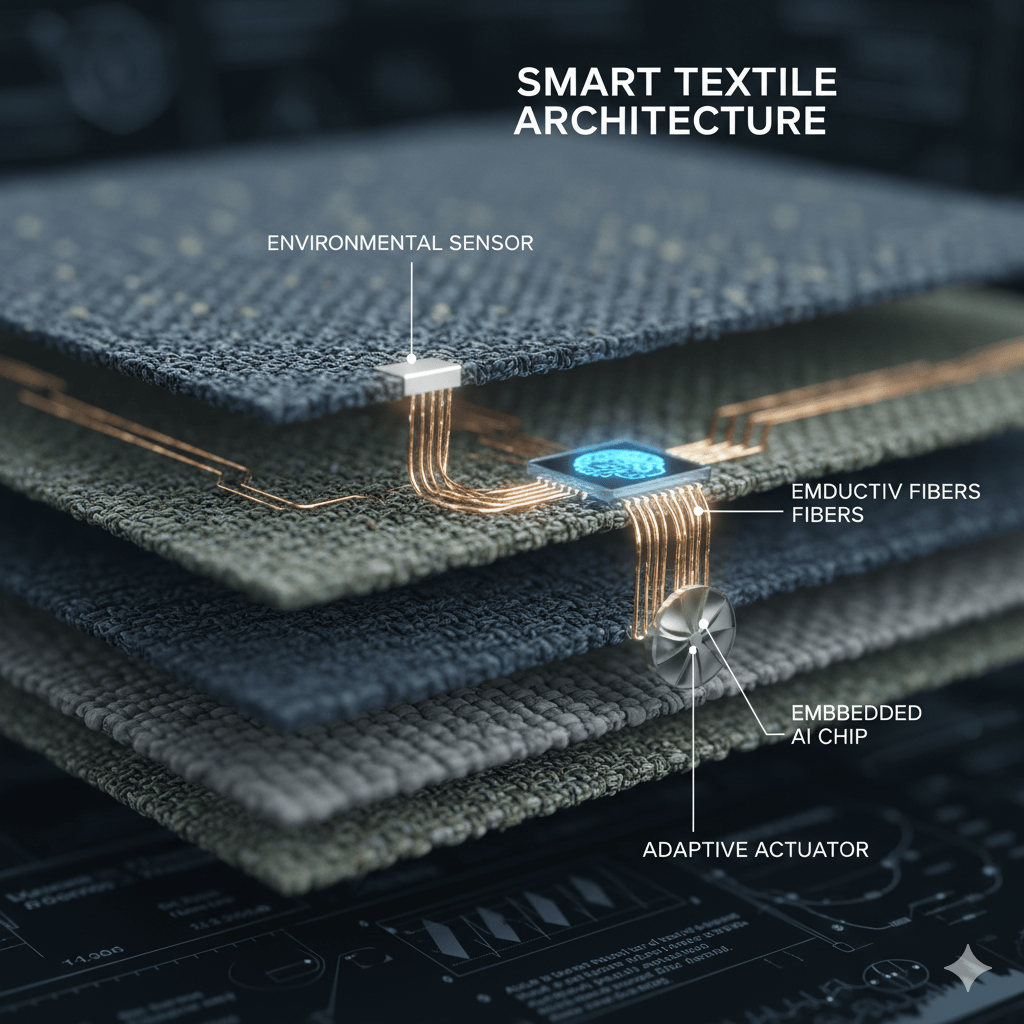In recent years, textiles have begun an evolution far beyond fashion or utility — they’re becoming smart, responsive, and adaptive. AI-powered “smart fabrics” or “intelligent textiles” merge traditional materials with sensors, actuators, and embedded computation to create garments and surfaces that can monitor, respond, or even adapt to external conditions. As wearable technology and ambient computing evolve, these fabrics are poised to redefine how we interact with clothing, healthcare, environments, and more.
What Are Smart Fabrics?
Smart fabrics are textiles integrated with electronic components (sensors, actuators, conductive threads) and potentially AI modules. They can:
- Sense environmental or bodily parameters (temperature, humidity, motion, heart rate)
- Respond by changing properties (color, porosity, stiffness)
- Communicate data wirelessly
- Perform computation (locally or via cloud) to adapt behavior
For instance, a jacket might dynamically adjust its insulation based on ambient temperature or a shirt could monitor a wearer’s vital signs and alert medical services in emergencies.
Recent Innovations & Examples

- Health-monitoring wearables embedded in textiles: Researchers are weaving ECG sensors and sweat analyzers directly into fabric to continuously monitor cardiovascular health or hydration. These fabrics can wirelessly transmit data to a smartphone.
- Adaptive color/thermochromic fabrics: Materials that change color or shading in response to temperature, light, or electric signals are being enhanced with AI models that predict when changes should occur to maintain comfort.
- Self-healing or self-repairing fabrics: Some composite textile research combines microcapsules or shape-memory polymers that can repair small tears or damage over time.
- Energy-harvesting fabrics: Smart fabrics are being designed to harvest energy from body motion, heat, or solar exposure, powering small embedded sensors autonomously.
One article in Nature Electronics describes “smart textiles for personalized healthcare,” showing how fabrics can integrate diagnostics, therapy, and data transmission.
AI is already shaping this space: for instance, systems like E-TeCS (Electronic Textile Conformable Suit) use AI to manage data from textiles.
How AI Enhances Smart Fabrics
AI plays multiple roles:
- Sensor fusion & interpretation: Raw signals from multiple sensors (temperature, stretch, moisture) are noisy and contextual. Machine learning models help interpret them — e.g. distinguishing between sweat vs ambient humidity.
- Prediction & adaptation: AI can predict future conditions (e.g. a drop in temperature) and proactively modify fabric behavior (e.g. tighten weave, increase insulation).
- Personalization: Over time, the system can learn a user’s habits or physiology and adapt thresholds or responses (e.g. “when she runs, open ventilation”).
- Edge computation: With lightweight AI modules on the fabric or in a small module, decisions can be made locally, reducing latency or privacy concerns.
Challenges & Technical Hurdles

- Durability & washability: Embedding electronics must not compromise the ability to wash, stretch, or wear the fabric. Ensuring connections survive mechanical stress is hard.
- Power & energy: Even energy-harvesting fabrics struggle to generate sufficient power for complex sensors or computation.
- Miniaturization & integration: Blending sensors, circuits, and conductive threads invisibly (without bulk or discomfort) requires advanced microfabrication.
- Data privacy & security: Wearables generate sensitive personal data. Ensuring secure transmission, data ownership, and user consent is critical.
- Scalability & cost: For broad adoption, these solutions must be cost-effective for mass manufacturing.
Potential Applications
- Healthcare & remote monitoring: Continuous tracking of vitals, fall detection, sleep monitoring — especially useful for elderly or chronic patients.
- Sports & fitness: Real-time form monitoring, sweat analysis, muscle strain detection.
- Workwear & protective garments: Fabrics that change stiffness or ventilation based on environment or workload.
- Fashion & aesthetics: Clothes that change color or patterns dynamically (e.g. mood clothes).
- Military & defense: Camouflage uniforms that adapt to surroundings; fabrics that sense chemical or environmental hazards.
Outlook & Future Directions
Within the next decade, smart fabrics may become mainstream. As flexible electronics, better batteries, and AI models evolve, clothing could become the next computing platform. Imagine garments that sense your health, environmental risks, or even help you control devices via gestures. The intersection of AI, material science, and textile engineering is one of the most exciting frontiers in wearable tech.


